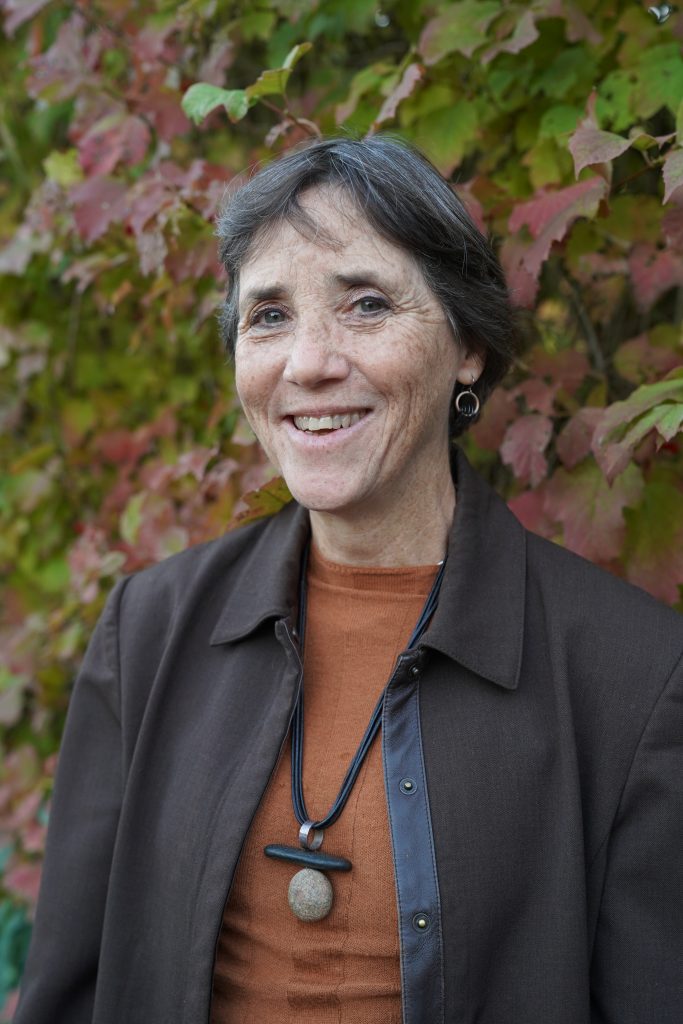

14/08/2023
Action to conserve, restore and sustainably harness the power of the natural world to help address the climate and nature crises now has an internationally agreed name and rallying term - Nature-based Solutions (NbS). 2022 featured a series of big, interrelated moments for the increasing profile of NbS. In March, 193 UN member states agreed to a global definition of NbS which clearly links the sustainable and effective use of nature to tackling the world’s myriad sustainable development challenges. In October, the UN Environment Programme (UNEP) and UNEP- World Conservation Monitoring Centre (WCMC) released a policy report collating the key considerations around NbS uptake and set out recommendations for international, national and local leaders to drive progress.
Following that report, the succession of major end-of-year summits - from wetlands at COP14, climate at COP27 and biodiversity during COP15 - all underscored the crucial need to scale up action on NbS. However, while the theme has moved up the global political agenda, there are still many questions being asked around the role, value and inclusivity of NbS.
UNEP is now preparing to launch a series of global and regional consultation sessions, across the public and private sectors, research and civil society, to firm up the global NbS agenda. This process will continue to build consensus on what constitutes appropriate and effective actions, help promote best practice and put in place frameworks for effective, sustainable, and socially inclusive NbS. As we wait for the next steps of high-level action, the UNEP-WCMC and UNEP NbS teams spoke to three leading sector experts about their experience with NbS, the projects that have inspired them and asked for their views on the key opportunities and challenges for scaling up NbS.

Dr. Musonda Mumba
How have NbS featured in your work to date and how will they feature in your work in coming years?
Dr. Musonda Mumba: As a “Nature-based” and ecosystem-focused Convention, NbS features in the Convention’s work all the time and is part of our modus operandi. Our Contracting Parties designate Wetlands of International Importance (Ramsar sites) based on critical data, science and information that is important to the progression of NbS.
What do you think is the greatest barrier to scaling up the use of NbS?
Dr. Musonda Mumba: The greatest barrier for NbS is using data to show what resilient ecosystems look like and, as such, attract funding for NbS. Various data can inform different aspects of key issues, such as livelihoods, species, economic activity, and so on. And a major question is: how do we find the balance to produce the true cost of NbS? And what is the true cost of the absence of NbS (when wetlands are degraded or lost)?
What excites you most about the opportunities NbS offer?
Dr. Musonda Mumba: My past work has really provided an opportunity to bring NbS together with all the three pillars of the UN Sustainable Development Goals (SDGs) - social, economic and environmental - weaving them very neatly. As a result, all the players, whether private or public sector, need to be involved and engaged in NbS at all levels.
What is your favourite example of NbS in practice and why?
Dr. Musonda Mumba: Ecosystem based Adaptation (EbA) is my favorite example because it also incorporates elements of Integrated Water Resources Management and other NbS practices. I also found that the adaptation lens of EbA is critical at a landscape or river basin level, having led work focused on EbA in mountain landscapes of Peru, Uganda and Nepal the work at both the policy and programmatic level cut across the pillars of the SDGs. And more importantly, when we talk about NbS we also must also remember that people are central to this.
2. Dr. Baolong Han - Associate Professor of State Key Laboratory of Urban and Regional Ecology, Research Center for Eco-Environmental Sciences, Chinese Academy of Sciences (CAS); Secretary-General of Special Committee on Ecological Management, Chinese Society of Ecology; Urban Program Director of CAS-based NatCap team, Natural Capital Project, Stanford University.

Dr. Baolong Han
How have NbS featured in your work to date, and how will they feature in your work in coming years?
Dr. Baolong Han: NbS is mainstreaming significantly in my area. Researchers are paying more attention to how NbS can solve traditional urban challenges, and government officials are increasingly asking about how we can benefit from nature, rather than how much nature needs to be restored. This is an important signal that urban people care more about nature, not just because of its scarcity, but because of the functional benefits from nature.
In future, I predict there will be more researchers and engineers turning to focus on natural capital accounting research and ecosystem service evaluation, especially health services.
What do you think is the greatest barrier to scaling up the use of NbS?
Dr. Baolong Han: In my experience, there are two problems delaying the application of NbS. Firstly, the lack of quantification tools for the benefits of NbS. NbS is not just for eco-restoration, but also for supporting our current mode of life and environment investors always want to know how much we can benefit from the investment in NbS engineering but right now it is hard to answer this question, especially with a monetary evaluation of the benefit. Secondly, there is a misunderstanding about comparing “grey infrastructure” with NbS. Assessors might conclude that NbS has a low efficiency compared to “grey infrastructure”, based on NbS performance during a sudden extreme climate problem. For single urban resilience issues, such as urban flooding, NbS cannot deal with all run-offs or flooding immediately. And some NbS may not work in winter, for example because of low temperatures meaning not enough heat for plants. But the value of NbS is in its multiple services: one NbS engineering project can provide more than ten different kinds of ecosystem services, such as carbon sequestration, water conservation, recreation, and so on.
What excites you most about the opportunities NbS offer?
Dr. Baolong Han: NbS gives cities the opportunity to get closer to nature. Smart mayors will not let their city become a cement forest, but a city in a forest. As an individual citizen, I want more natural spaces for my family. NbS is the right way to use nature for sustainable human development, and as a researcher, NbS is a new, exciting and massively important research area, working towards re-coupling the relationship between humanity and nature.
What is your favorite example of NbS in practice and why?
Dr. Baolong Han: In terms of NbS engineering, the Government of China has embarked on the biggest national parks system in the world. This is good for both China and the world’s biodiversity conservation. In terms of NbS management, the central and local governments are mainstreaming the evaluation of ecosystems by releasing technical guides to help green more urbanized areas and cities, such as Beijing and Shenzhen. More people and Governments are beginning to think about both nature’s multiple benefits and monetary benefits, which is ultimately good for NbS investment.
3. Dr. Valerie Kapos - Principal Technical Specialist, UNEP-WCMC

Dr. Valerie Kapos
How have NbS featured in your work to date, and how will they feature in your work in coming years?
Dr. Valerie Kapos: As a forest ecologist with a keen interest in ecosystem function and services I have always had a strong awareness of the way ecosystems mediate environmental change and its impacts on people. My focus on forests led naturally to exploring and supporting their role in mitigating climate change, for example, via the REDD+ Program - and UNEP-WCMC’s climate change and biodiversity linked work programs have rapidly expanded to cover the roles of other ecosystems and the contribution that ecosystems can make to climate change adaptation. These workstreams have now evolved into UNEP-WCMC’s dedicated NbS impact area and focal initiatives. I am also keenly interested in other NbS applications, such as to support people’s health and well-being in the face of multiple 21st Century challenges.
What do you think is the greatest barrier to scaling up the use of NbS?
Dr. Valerie Kapos: On the one hand there is a lack of awareness understanding and capacity among those making decisions on ways to address societal challenges (including finance) and implementing changes, and on the other hand there are challenges linking lots of to-date site scale interventions to create larger impacts at landscape scale and beyond.
Improving monitoring and evaluation will help to generate evidence on effectiveness, especially for adaptation interventions, which is critical to increasing NbS awareness, interest and uptake.
What excites you most about the opportunities NbS offers?
Dr. Valerie Kapos: Their ability to deliver multiple benefits (including and especially for biodiversity) and have a positive impact in addressing several environmental and societal challenges at once.
What is your favorite example of NbS in practice and why?
Dr. Valerie Kapos: I am impressed by catchment-scale ecosystem restorations that work to secure both consistent water quantity and quality for the benefit of local people, but also water-dependent industry and energy provision, as well as some of the innovative financing approaches that are involving multiple stakeholders and enabling large-scale implementation. I am also keen on approaches that provide solutions to both terrestrial and coastal challenges, including improved conservation and management of upland natural and agricultural ecosystems, as well as wetland restoration.
Vũ Hồng (Source: http://www.unep.org)
(Source: The article was published on the Environment Magazine by English No. I/2023)